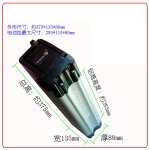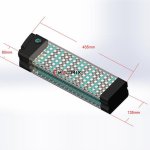mxlemming
100 kW
- Joined
- Jul 17, 2020
- Messages
- 1,122
This is pretty basic stuff... 48minutes, it's painfully slowzombiess said:mxlemming said:I for one would very much like to hear/talk about this. I have the math ability, I don't have years of elec eng experience. I do pretty well visualising stress fields in solids, predicting flow patterns etc...
I bet Shaman would love to know too.
This is my goto reference video for electromagnestism
https://youtu.be/9Tm2c6NJH4Y
You can get a free physics education by watching all his videos. I need to go through them all again myself as it's been several years and i need a refresher.
I actually don't like youtube tutorials of stuff, they are almost invariably intolerably slow and basic. And I'm not especially patient.
zombiess said:To break down the math:
http://www.maxwells-equations.com/m/index.php
Nice summary, this is great. Been a few years since I studied the calculus, but when it's neatly put into a few neat lines like this, it comes back fast!
Over in my other thread I am struggling to understand the need for isolated gate drives and gate drive power supplies. It seems to me that they should not be a requirement unless your system is so large that there are unavoidable large gaps between phases or unavoidably large connections between power stage and the uController. Clearly this is the case if you have stacks and stacks of paralelled IGBTs with multiple gate drivers/phase, like you're making an electric car or inverter for a wind turbine, but for our little <10kW inverters... The max resistance across the ground plane of my PCB calculates as <1mohm before reinforcing with copper sheet, so for even 200A, that's just 0.2V, which won't really affect anything. Not even the logic.
Inductive turn on... Much trickier to come to terms with, but again, with small loops, keeping all the logic traces routed cleanly above a solid ground plane, and keeping the gate drive traces routed next to their return path (switch node or ground plane), only crossing power traces perpendicularly so that the cross product of the trace and the magnetic field around the high current path is zero it should just all work out with the inductive spikes canceling on the send and return path, the capacitances of the gates and gate resistors damping etc...
Then there's miller turnon - the gate-drain capacitance charging and thus bouncing the gate-source capacitance voltage... Am I right in thinking that this becomes an issue when VddxCgd is not << VthresholdxCgs such that the rapid swing (which cannot be absorbed through the gate driver/resistors) causes the gate potential to exceed the threshold voltage of the FET?
Or did I just get lucky on a not huge power inverter?
I certainly did not get lucky on my first ever inverter I attempted to build; breadboard with jumper wires for ground connections... the second one I made (https://photos.app.goo.gl/aShDJQYV39dip2ui9) was a whole lot better, but still had a 3 inch square return loop on the gate drives. That one basically worked, but I kept murdering FETs with losing synch and over volting them into avalanche, or creating buck arrangements through the motor that dumped vast and unmeasured numbers of amps through... everything... I never came to terms with why this killed gate drives as well, but it did. I also didn't believe in ceramic capacitors, so the power lines were full of spikes. I didn't believe in them because attaching those huge leaded discs using extension wires seemed to do very little :lol: .
That's a year ago though. blowing little expensive things up makes you think harder and learn fast.
Incidentally, I created a nice example oscilloscope trace yesterday of what happens when your motor loses synch (spun up a bike wheel and unplugged a hall sensor while running). I guess this is why you need 100V fets for a 60V drive. Those little ringy things on the square edges take up ~10V, then you need a few V of room (5? 10?)for any regen braking to push the current back into your battery, then you need some headroom to allow your OVP to occur before things die without always tripping erroneously(another 10?) then you're up to 85V and therefore need 100V FETs...
https://photos.app.goo.gl/aShDJQYV39dip2ui9
The rotor (/and bike wheel/and KE of you rolling down a hill/...) energy gets erratically converted into current which ultimately ends up on the power rail boosting the power rail voltage up and up until either something clamps it or the inverter turns off (here I programmed a comparator on the Vbus line to cut timer1 PWM output as soon as voltage exceeds 30V, so it trips before killing everything.




